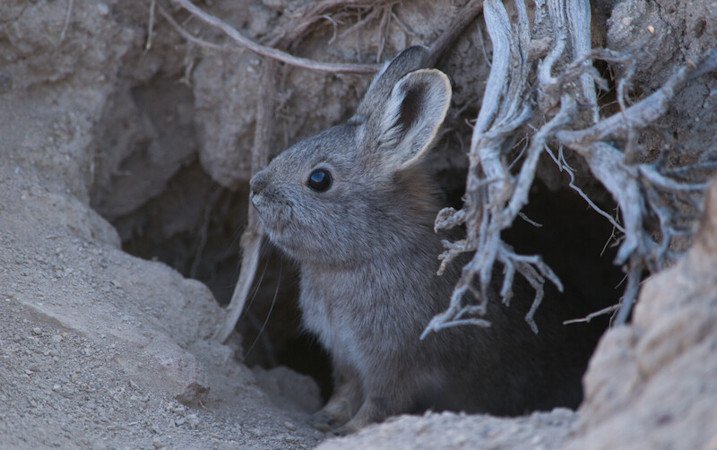Federal officials consider adding 10 more species – including the pygmy rabbit – to endangered list

By TODD RICHMOND
Associated Press
MADISON, Wis. (AP) — Federal wildlife officials say they've decided to review whether to add 10 more species to the Endangered Species List.
The U.S. Fish and Wildlife Service announced Wednesday that the agency has completed its 90-day review of petitions to add the new species and decided that inclusion may be warranted, triggering status reviews of their populations.
The species include freshwater fish species betta hendra and betta rutilans; the Hickory Nut Gorge salamander; the pygmy rabbit; the Railroad Valley toad, the Southern Plains bumble bee; the Southwest spring firefly, the white-margined penstemon, a rare perennial plant; and the yellow-spotted woodland salamander.
News release from the Center for Biological Diversity:
Pygmy Rabbit One Step Closer to Endangered Species Act Protection
BOISE, Idaho (KTVZ) — The U.S. Fish and Wildlife Service today announced that the pygmy rabbit may warrant protection under the Endangered Species Act. The pygmy rabbit is the world’s smallest rabbit and is threatened by livestock grazing, oil and gas extraction, invasive non-native grasses and wildfire.
Pygmy rabbits require intact sagebrush for virtually all their winter diet and for cover from predators. They also need areas with deep soil to construct burrows where they shelter from predators and safeguard their babies. Pygmy rabbits are found in parts of Wyoming, Utah, Idaho, Nevada, Montana, Colorado, California and Oregon.
“It’s never ‘good news’ that species are found to be at risk of extinction, but we’re pleased that the pygmy rabbit is getting the attention it deserves from the U.S. Fish and Wildlife Service and we’re optimistic that federal protection can help reverse the alarming downward population trends,” said Greta Anderson, deputy director of Western Watersheds Project.
Today’s decision is the result of a petition submitted by conservation groups in March 2023. In the decision, the Service found that protecting the pygmy rabbit as threatened or endangered throughout its entire range may be warranted. The Service will now evaluate if the pygmy rabbit warrants protection under the Endangered Species Act.
“This is a great first step toward protecting the tiny but mighty pygmy rabbit and the habitat it needs to survive,” said Randi Spivak, public land policy director at the Center for Biological Diversity. “The once vast sagebrush sea ecosystem is facing a triple whammy of accelerated climate change, agriculture and industrial development. Endangered Species Act protection is desperately and urgently needed to save these wondrous little creatures.”
“We’re relieved to finally see the Fish and Wildlife Service taking enormous threats to the pygmy rabbit’s survival seriously,” said Lindsay Larris, wildlife program director for WildEarth Guardians. “This positive 90-day finding puts the rabbit hopping towards obtaining crucial Endangered Species Act protections in the near future.”
“We are thrilled to see the pygmy rabbit clear this hurdle towards Endangered Species Act protection,” said Vera Smith, senior federal lands policy analyst at Defenders of Wildlife. “The alarming declines in multiple species that depend on healthy sagebrush habitats signal the need for immediate action to better protect our sagebrush sea habitats across the West.”
Background
The Sagebrush Sea is under stress from fire intensified by invasive plants, development, livestock grazing, oil and gas extraction, drought and climate change. An estimated 1.3 million acres are lost every year, with just 13.6% of the original ecosystem still ecologically intact.
Within the past 50 years, populations of the once-common pygmy rabbits have progressively dwindled. In Wyoming their population has declined to just 15% occupancy. Utah has alarmingly low occupancy rates of just 7% to 13%. Occupancy rates average 23% in Idaho and 22% in Nevada.
The pace of habitat loss and degradation of the pygmy rabbit’s sagebrush habitat has accelerated to unsustainable levels. In addition, an emerging virus first detected in pygmy rabbits in 2022 poses a serious threat to their survival.
Pygmy rabbits were first proposed for listing under the Endangered Species Act in 1991. In 2003, several conservation groups submitted another petition. In September 2010, the Fish and Wildlife Service denied protections.